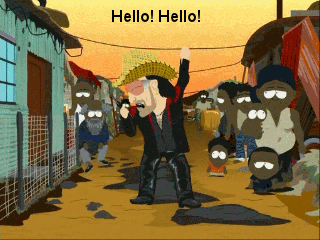Five Ways To Spot An International Charity That’s Actually Worth Supporting
Find a charity that isn't just a vehicle for misguided voluntourism selfies can be hard to find. Here's what to look for.

You’ve seen the shock advertising tactics with starving kids. You’ve probably received charity spam in your mailbox. And, unless you’re an eye-contact-avoiding genius, charity muggers with no sense of personal space have undoubtedly accosted you.
There are a multitude of international charities asking for our money and they all claim to need it the most. Some of them pledge to use each dollar more effectively, “save X number of children with every donation” or “donate a cold press juicer to a poor family for every juicer purchased”. (That last one may be a creative embellishment.)
Perhaps you’ve decided that you have some cash to spare and you want to put it towards a worthy cause. So what’s next? With a cacophony of messages out there about what defines a ‘good’ or ‘bad’ charity, how can you make sure that your money is well spent?
Here are some tips for putting international charities to the test.
–
They started on more than a whim and a holiday
“In 2002 while on vacation, sitting on the riverside in Phnom Penh with my wife, I noticed a young girl selling wristbands. Her name was Sophea and she was seven years old.
“She told me that her parents couldn’t afford to send her to school, instead prioritising her five brothers’ education. In tears, my wife and I realised that we had to do something. We gave up our corporate jobs in England to start Sophea’s Story, a charity that aims to provide young girls with an education.”
This story is fictional, but you only need to visit a few charity websites to find a ‘How We Started’ story that sounds similar. It’s a touching story, sure, but a great story doesn’t necessarily make an effective charity. It’s nice to have compassion. It’s admirable to want to do something to better the world. But hairdressers don’t start banks because they feel it’s time for a change. Plumbers don’t open up hospitals because they want to help the terminally ill. You get the idea: people with no background working in developing countries shouldn’t start charities on a whim.

If the description of the way a charity started sounds like a spur of the moment decision, this should ring alarm bells, particularly if the decision was based upon the life circumstances of the founders: “We were reaching a point in our lives where we wanted to give back, so we decided to start this charity.”
Founders of a good charity will have spent time planning and researching before diving in, including ensuring that they aren’t just duplicating the work of an existing charity. They will also ideally have experience in development work and extensive knowledge of the country in which they’re working. If this isn’t the case, they should surround themselves by a team who holds this experience.
The Takeaway: We all love a good story, but an effective charity will have the research, skills and strategies to back it up.
–
They respect your intelligence and your money (and don’t use pie charts)
We all want to know where our money is going, so it makes sense that charities face heavy scrutiny for their use of donations. In response, many of them will point to nicely coloured pie charts that scream: “Look how little we spend on overheads!” This figure (referring to the amount spent on administration and fundraising) should be enough to tell a good charity from a bad one, right?
Well, not exactly. For starters, there is no singular definition of what an “overhead” is. Charities often become skilled at the creative use of numbers and language to avoid telling you exactly how they spend your money. For example, a large charity with an office in London will shift their administrative staff to their field office in Kenya. Magic – their salaries are no longer an “overhead” cost.
The overhead myth is hands down the most damaging myth that prevents charities from doing good work. Charities need administration and fundraising not only to survive but also to provide the service they say they will. To do good work, you need to pay staff salaries, or else you get ineffective, amateurish work.
So why do charities play these games? Mostly because it’s easier to fuel the belief that “low administration costs = better charity” than to redefine the conversation.
More often than not, reliance on a pie chart shows that the charity is more interested in taking your money than doing good work in the long term. Fundraising and administration costs within reason should be seen as an investment that helps charities survive and thrive. Just as you would buy shares in a company that invests money in its survival, the same thinking should apply to charities.
The Takeaway: While financial transparency is undoubtedly important for any organisation, dumbed down explanations such as pie charts are inaccurate and misleading. An effective charity will be able to offer more compelling evidence for why you should support them, such as how many micro loans they provided to women who in turn started a successful endeavor.
–
They recruit volunteers, not voluntourists
Many of us have heard of opportunities to care for an orphan, feed a child or build a school. Sure, these trips can leave us with a nice feeling, but what are they actually doing long term for the communities we visit?
Whether we like it or not, many charities require volunteers. This in itself shouldn’t deter you from donating, as often the smallest organisations initially rely heavily on volunteer support and individual donations to grow. What matters more is the nature of the volunteering: the responsibilities should effectively mirror the work of paid staff within the organisation. This work often involves a lot of paperwork, budgeting and writing emails; just like any other job. This work is in no way glamorous.
As a rule, if a volunteer is doing a task for which they have no skills (caring for children at an orphanage) or something that could quite easily be done by a local person with the right resources (building a house), that volunteer might want to rethink his or her contribution. If volunteers are working as professionals and using their technical skills, then the organisation is seeking to add genuine value to its work. If an organisation offers up volunteer experiences that seem too attractive, this might be a red flag.
The Takeaway: A volunteer placement should be about the benefit to the community, not the volunteer’s Instagram account.
–
Their goal is to leave
It makes sense, really: if the purpose of an international charity is to support the development and empowerment of a country or community, then they shouldn’t plan to be there forever.
A charity that truly believes in empowering local communities will have an exit strategy from day one: “what does success look like”, and “how do we go about leaving once we’ve achieved it?” There may be exceptions to this due to the often unstable and uncertain conditions in which international charities work, but in general, an exit strategy is a good indicator of a charity that serves its target communities rather than itself.
There was a recent discussion in Cambodia around exit strategies for international organisations. While one group said that international organisations needed to start handing over their work to local organisations as soon as possible, another international organisation claimed the situation was so bad in Cambodia that they could only begin to discuss an exit strategy once things improved. One charity has a small staff and implements through local partners, the other has a thousand of its own staff. You can probably guess which is which.
The Takeaway: A charity that plans its exit strategy from day one is worth supporting, as it shows that empowerment of local communities is a priority, not an afterthought.
–
They’re open about their failures (and they will fail, sometimes)
If you visit any charity website, you’ll see glossy photos of children saved, women empowered, or communities lifted out of poverty. Understandably, charities are quick to trumpet their successes, as these are needed to appease supporters and critics alike. But how often do we hear about what went wrong?
In 2011, Engineers Without Borders Canada started a website called Admitting Failure. It was an eye-opening and brave move. Beyond the glossy photos of success stories and dressed up statistics, charities are as likely to fail as any venture – perhaps even more likely due to the complexities they face daily.
Trying to solve big problems in any context – let alone in a country with a different culture, language or education system – is challenging. Effective charities must be humble enough to admit that they are learning along the way and use this learning to improve their work. It shows that these organisations don’t believe that they know everything. After all, how could they?
The Takeaway: Admitting failure is not only a good sign of transparency, it’s also a sign that an organisation is committed to real progress.
–
In the sea of charitable activities that are out there, it can often seem exhausting to know which one to support. Often, decision paralysis or compassion fatigue take over, and we end up doing nothing. While this list is by no means exhaustive, they provide some simple guidelines as to which kind of charities are worthy of your support. Do some investigating and by no means turn away from a charity that has higher “overhead” costs compared to another.
–
Weh Yeoh is the founder and managing director of OIC: The Cambodia Project, which aims to establish speech therapy in Cambodia for those with communication and swallowing disorders.